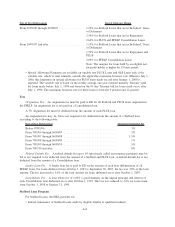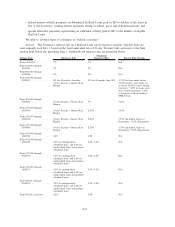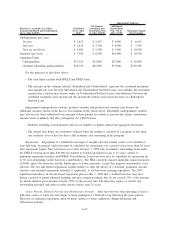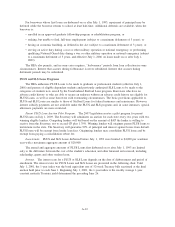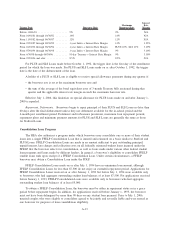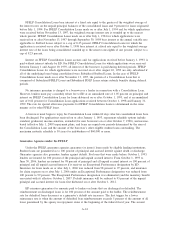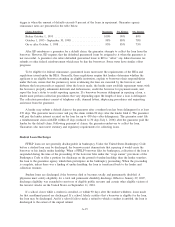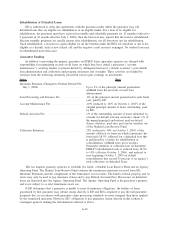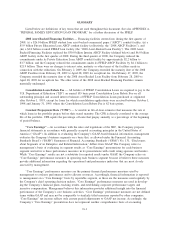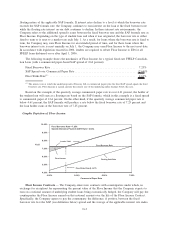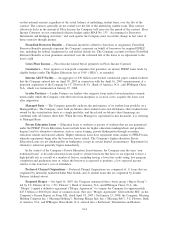Sallie Mae 2008 Annual Report Download - page 236
Download and view the complete annual report
Please find page 236 of the 2008 Sallie Mae annual report below. You can navigate through the pages in the report by either clicking on the pages listed below, or by using the keyword search tool below to find specific information within the annual report.See Note 20, “Segment Reporting,” to the consolidated financial statements and “MANAGEMENT’S
DISCUSSION AND ANALYSIS OF FINANCIAL CONDITION AND RESULTS OF OPERATIONS —
BUSINESS SEGMENTS — Limitations of ‘Core Earnings’ ” and “— Pre-tax Differences between ‘Core
Earnings’ and GAAP by Business Segment” for further discussion of the differences between “Core Earnings”
and GAAP, as well as reconciliations between “Core Earnings” and GAAP.
In prior filings with the SEC of SLM Corporation’s Annual Report on Form 10-K and quarterly reports
on Form 10-Q, “Core Earnings” has been labeled as “ ‘Core’ net income” or “Managed net income” in certain
instances.
ED — The U.S. Department of Education.
Embedded Floor Income — Embedded Floor Income is Floor Income (see definition below) that is
earned on off-balance sheet student loans that are in securitization trusts sponsored by the Company. At the
time of the securitization, the value of Embedded Fixed-Rate Floor Income is included in the initial valuation
of the Residual Interest (see definition below) and the gain or loss on sale of the student loans. Embedded
Floor Income is also included in the quarterly fair value adjustments of the Residual Interest.
Exceptional Performer (“EP”) — The EP designation is determined by ED in recognition of a servicer
meeting certain performance standards set by ED in servicing FFELP Loans. Upon receiving the EP
designation, the EP servicer receives reimbursement on default claims higher than the legislated Risk Sharing
(see definition below) levels on federally guaranteed student loans for all loans serviced for a period of at
least 270 days before the date of default. The EP servicer is entitled to receive this benefit as long as it
remains in compliance with the required servicing standards, which are assessed on an annual and quarterly
basis through compliance audits and other criteria. The annual assessment is in part based upon subjective
factors which alone may form the basis for an ED determination to withdraw the designation. If the
designation is withdrawn, Risk Sharing may be applied retroactively to the date of the occurrence that resulted
in noncompliance. The College Cost Reduction Act of 2007 (“CCRAA”) eliminated the EP designation
effective October 1, 2007. See also Appendix A, “FEDERAL FAMILY EDUCATION LOAN PROGRAM.”
FDLP — The William D. Ford Federal Direct Loan Program.
FFELP — The Federal Family Education Loan Program, formerly the Guaranteed Student Loan
Program.
FFELP Consolidation Loans — Under the FFELP, borrowers with multiple eligible student loans may
consolidate them into a single student loan with one lender at a fixed-rate for the life of the loan. The new
loan is considered a FFELP Consolidation Loan. Typically a borrower may consolidate his student loans only
once unless the borrower has another eligible loan to consolidate with the existing FFELP Consolidation Loan.
The borrower rate on a FFELP Consolidation Loan is fixed for the term of the loan and is set by the weighted
average interest rate of the loans being consolidated, rounded up to the nearest 1/8th of a percent, not to
exceed 8.25 percent. In low interest rate environments, FFELP Consolidation Loans provide an attractive
refinancing opportunity to certain borrowers because they allow borrowers to consolidate variable rate loans
into a long-term fixed-rate loan. Holders of FFELP Consolidation Loans are eligible to earn interest under the
Special Allowance Payment (“SAP”) formula (see definition below). In April 2008, the Company suspended
its participation in the FFELP Consolidation Loan program.
FFELP Stafford and Other Student Loans — Education loans to students or parents of students that
are guaranteed or reinsured under FFELP. The loans are primarily Stafford loans but also include PLUS and
HEAL loans.
Fixed-Rate Floor Income — The Company refers to Floor Income (see definition below) associated with
student loans with borrower rates that are fixed to term (primarily FFELP Consolidation Loans and Stafford
Loans originated on or after July 1, 2006) as Fixed-Rate Floor Income.
Floor Income — FFELP loans generally earn interest at the higher of either the borrower rate, which is
fixed over a period of time, or a floating rate based on the SAP formula (see definition below). The Company
generally finances its student loan portfolio with floating rate debt whose interest is matched closely to the
G-2


